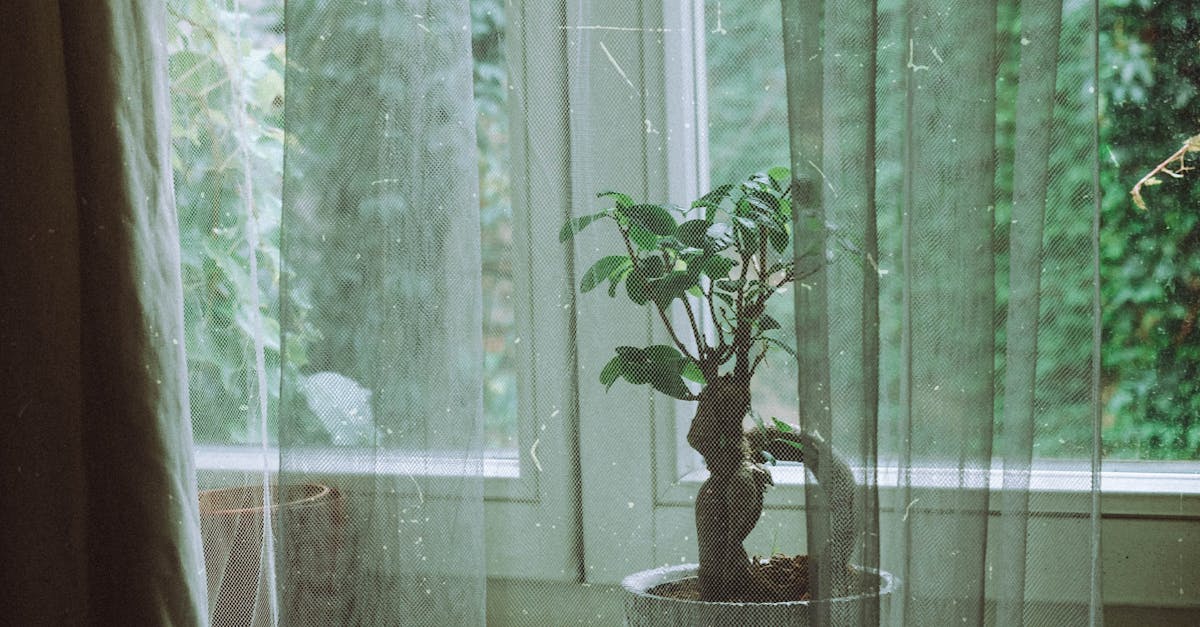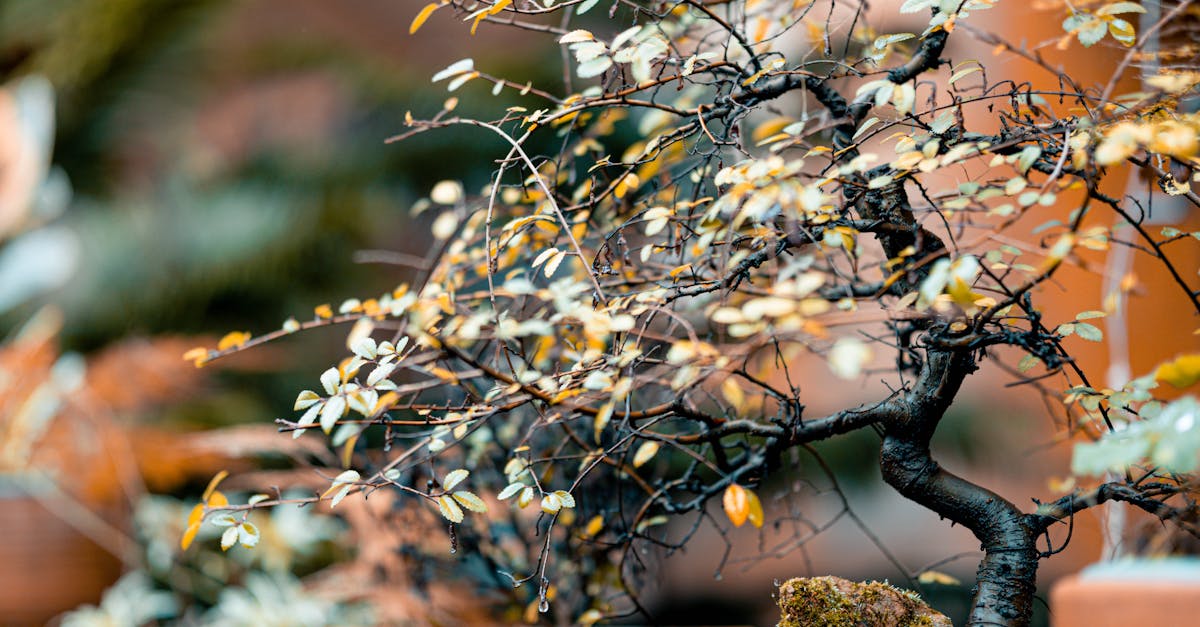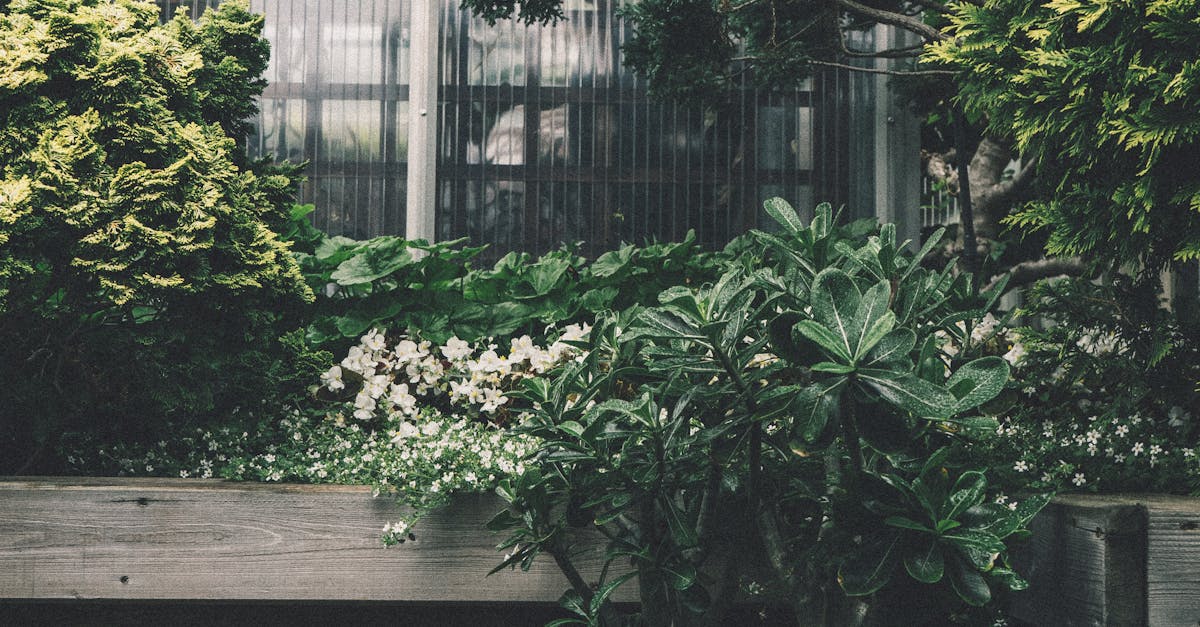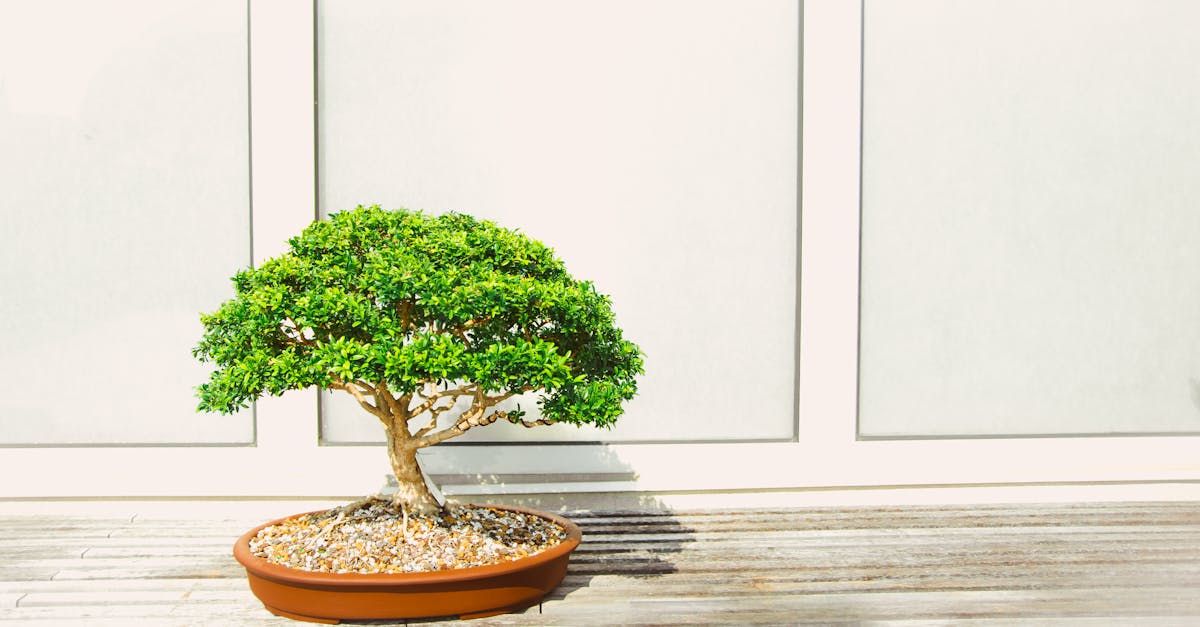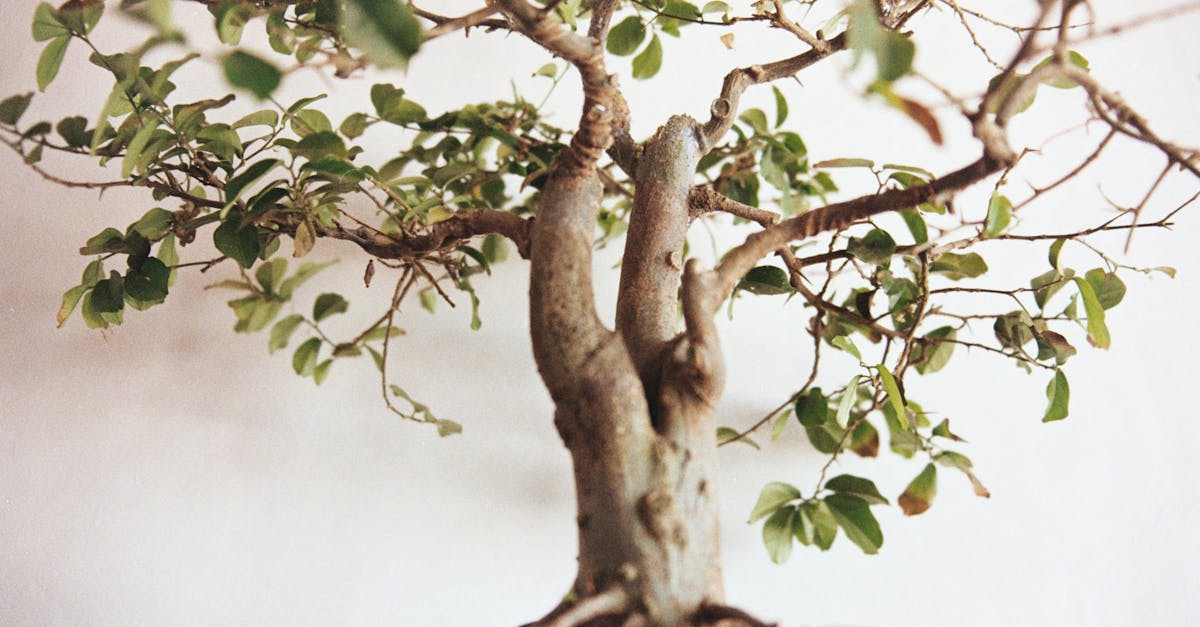Transforming Interiors: The Art of Bonsai as Home Decor
Bonsai trees, with their intricate branches and miniature landscapes, have captivated nature enthusiasts for centuries. In modern home decor, they serve as exquisite focal points, adding a touch of serenity and timeless elegance to any space. This comprehensive guide will delve into the art of incorporating bonsai trees into your home, ensuring they become harmonious additions that enhance the ambiance and bring tranquility to your living environment.
Bonsai cultivation is an ancient art form that originated in China over a thousand years ago. It involves meticulous pruning and training techniques applied to miniature trees, creating living sculptures that mimic the grandeur of nature in a condensed form. Bonsai trees not only add visual interest but also bring a sense of peace and tranquility to your abode. Their diminutive size makes them suitable for various spaces, from cozy apartments to sprawling mansions.
When selecting a bonsai tree for your home, it’s essential to consider the size and style of your space. Matching the bonsai’s aesthetics to your interior design theme will create a harmonious and cohesive look. Different bonsai species thrive in specific environments, so choose one that aligns with the humidity and light conditions of your home.
1. The Essence of Bonsai: A Timeless Art Form
The art of bonsai, with its origins in ancient China over a millennium ago, is a testament to human ingenuity and appreciation for nature’s beauty. Bonsai trees are not merely miniature versions of their larger counterparts; they are living works of art that require meticulous care and cultivation. Bonsai enthusiasts spend years training and pruning their trees, carefully shaping their branches and trunks to create visually stunning and harmonious forms.
Beyond their aesthetic appeal, bonsai trees also hold cultural and philosophical significance. In Japanese culture, bonsai is closely associated with Zen Buddhism, embodying principles of simplicity, balance, and the interconnectedness of all living things. Bonsai practitioners believe that nurturing a bonsai tree is akin to cultivating inner peace and mindfulness.
In essence, bonsai is a timeless art form that combines horticultural skill, artistic expression, and a profound connection to nature. Bonsai trees are living sculptures that bring the beauty and tranquility of nature indoors, creating a sense of serenity and balance in any space.
2. Choosing the Perfect Bonsai for Your Space
Selecting the perfect bonsai tree for your space is crucial to creating a harmonious and visually appealing display. Consider the size and scale of the room where the bonsai will be placed. A petite bonsai may get lost in a large room, while an oversized bonsai can overwhelm a smaller space. Bonsai trees come in various sizes, from a few inches to several feet tall, so choose one that complements the dimensions of your room.
The style of your interior design also plays a role in choosing the right bonsai. Formal bonsai styles, such as the upright and cascade styles, suit traditional and minimalist decor. Informal styles, such as the slanting and windswept styles, add a touch of whimsy and movement to modern and eclectic spaces. Consider the overall aesthetic you want to achieve and select a bonsai that aligns with your design preferences.
Finally, consider the specific environment where the bonsai will be placed. Different bonsai species have varying requirements for light, humidity, and temperature. If you have a bright and airy room, you can choose a bonsai that thrives in those conditions. If your space is more shaded or humid, select a species that tolerates lower light levels and higher humidity. By matching the bonsai to its environment, you can ensure it remains healthy and vibrant for years to come.
Consider the Size and Scale of the Room
When choosing a bonsai tree for your space, it’s essential to consider the size and scale of the room where it will be placed. A bonsai tree that is too small for the room will get lost and fail to make a statement, while a bonsai tree that is too large will overwhelm the space and create a sense of imbalance.
To determine the appropriate size for your bonsai, consider the dimensions of the room and the amount of furniture and other objects in the space. A general rule of thumb is that the bonsai should be no taller than one-third the height of the ceiling. For example, if your room has a ceiling height of 8 feet, your bonsai should be no taller than 2 feet 8 inches.
In addition to height, you should also consider the width and depth of the bonsai tree. The bonsai should be in proportion to the size of the room and the furniture around it. For example, a small bonsai tree would be suitable for a desk or coffee table, while a larger bonsai tree could be placed on the floor or in a corner of the room.
Matching Bonsai Styles to Interior Design Themes
The style of your bonsai tree should complement the interior design theme of the room where it will be placed. Formal bonsai styles, such as the upright and cascade styles, are well-suited to traditional and minimalist decor. Informal styles, such as the slanting and windswept styles, add a touch of whimsy and movement to modern and eclectic spaces.
Formal Bonsai Styles: – Upright style: The tree has a straight trunk that tapers towards the top. The branches are arranged in a symmetrical pattern, creating a sense of order and balance. – Cascade style: The tree has a trunk that curves downward, with the branches cascading over the edge of the pot. This style mimics the appearance of a waterfall and adds a touch of drama to any space.
Informal Bonsai Styles: – Slanting style: The tree has a trunk that leans to one side. The branches are arranged in an asymmetrical pattern, creating a sense of movement and dynamism. – Windswept style: The tree has a trunk that appears to have been shaped by strong winds. The branches are often twisted and gnarled, giving the tree a sense of age and character.
Selecting Bonsai Species for Specific Environments
Different bonsai species have different environmental requirements, so it is important to select a species that is well-suited to the conditions in your home or office. Some bonsai species, such as the Japanese maple, prefer bright, indirect light and high humidity. Others, such as the juniper, can tolerate lower light levels and drier conditions.
Factors to Consider When Selecting a Bonsai Species for Your Environment:
-
Light: Consider the amount of natural light your space receives. Some bonsai species, such as the ficus, can tolerate low light levels, while others, such as the bougainvillea, need bright, indirect light to thrive.
-
Humidity: The humidity level in your space is also an important factor to consider. Some bonsai species, such as the Chinese elm, prefer high humidity, while others, such as the juniper, can tolerate drier conditions.
-
Temperature: The temperature range in your space is another important factor to consider. Some bonsai species, such as the Japanese maple, prefer cooler temperatures, while others, such as the bougainvillea, can tolerate warmer temperatures.
By considering the environmental conditions in your space, you can select a bonsai species that is likely to thrive and bring beauty and tranquility to your home or office for many years to come.
3. Placement Strategies for Maximum Impact
The placement of your bonsai tree can have a significant impact on the overall look and feel of your space. Here are a few strategies for placing your bonsai tree for maximum impact:
Creating a Central Focal Point:
One way to make a statement with your bonsai tree is to place it in a central location in the room. This will draw the eye to the tree and make it the focal point of the space. You can place the tree on a pedestal or stand to elevate it and make it even more noticeable.
Balancing Asymmetry with Visual Interest:
Bonsai trees can also be used to create a sense of balance and visual interest in a room. For example, you can place a bonsai tree on one side of a coffee table or bookcase to create a sense of asymmetry. This can add a touch of drama to the space and make the tree more visually appealing.
Integrating Bonsai into Bookshelves and Display Cases:
Bonsai trees can also be integrated into bookshelves and display cases. This can be a great way to add a touch of nature to your home or office without taking up too much space. You can place the bonsai tree on a shelf or in a display case alongside other decorative items, such as books, sculptures, or artwork.
Creating a Central Focal Point
Creating a central focal point with a bonsai tree is a great way to make a statement in any room. Here are a few tips for achieving this:
-
Choose the right location: The best place for a central focal point is in the center of the room, where it will be visible from all angles. You may also want to consider placing the tree on a pedestal or stand to elevate it and make it even more noticeable.
-
Use a large or striking bonsai: A large or striking bonsai tree will make a bigger impact than a small or understated one. If you have a small bonsai tree, you can group it with other objects, such as rocks or plants, to create a more visually interesting display.
-
Add some accessories: Adding a few accessories, such as a pot, stand, or scroll, can help to enhance the look of your bonsai tree and make it more visually appealing.
Balancing Asymmetry with Visual Interest
Balancing asymmetry with visual interest is a great way to add a touch of drama and excitement to any room. Here are a few tips for achieving this with bonsai trees:
-
Choose an off-center location: Instead of placing your bonsai tree in the center of the room, try placing it off to one side. This will create a sense of asymmetry and make the tree more visually interesting.
-
Use different sizes and shapes: Using bonsai trees of different sizes and shapes can also help to create a sense of visual interest. For example, you could pair a tall, skinny bonsai tree with a short, wide one.
-
Add some other elements: Adding some other elements, such as rocks, plants, or water features, can also help to create a more visually interesting display. Just be sure not to overcrowd the space.
Integrating Bonsai into Bookshelves and Display Cases
Integrating bonsai into bookshelves and display cases is a great way to add a touch of nature and beauty to your home or office. Here are a few tips for doing this successfully:
-
Choose the right bonsai: Not all bonsai trees are suitable for display in bookshelves or display cases. Choose a tree that is small and compact, and that has a shallow root system. You may also want to consider choosing a tree that is evergreen, so that it will retain its leaves year-round.
-
Use a shallow pot: When displaying a bonsai tree in a bookshelf or display case, it is important to use a shallow pot. This will help to prevent the tree from becoming rootbound and will also make it easier to water and care for the tree.
-
Add some accessories: Adding a few accessories, such as rocks, moss, or figurines, can help to create a more visually interesting display. Just be sure not to overcrowd the space.
4. Accessorizing and Enhancing the Ambiance
Accessorizing and enhancing the ambiance around your bonsai tree can help to create a more visually appealing and inviting space. Here are a few tips for doing this:
-
Use a variety of pots and planters: The pot or planter that you choose for your bonsai tree can have a significant impact on the overall look and feel of the display. Choose a pot that is the right size and shape for the tree, and that complements the style of the tree and the surrounding décor.
-
Add some decorative elements: Adding a few decorative elements, such as rocks, moss, or figurines, can help to create a more visually interesting display. Just be sure not to overcrowd the space, and to choose elements that complement the style of the tree and the surrounding décor.
-
Use lighting to create a special effect: Lighting can be used to create a special effect and to highlight your bonsai tree. You can use natural light, artificial light, or a combination of both. Experiment with different lighting techniques to see what works best for your space.
Matching Planters and Pots to Bonsai Aesthetics
When choosing a planter or pot for your bonsai tree, it is important to consider the aesthetics of the tree and the overall style of your décor. Here are a few tips for matching planters and pots to bonsai aesthetics:
-
Consider the size and shape of the tree: The size and shape of the tree should be the primary factors when choosing a planter or pot. The planter or pot should be large enough to accommodate the root system of the tree, but not so large that the tree looks dwarfed. The shape of the planter or pot should complement the shape of the tree.
-
Choose a material that complements the tree: Planters and pots are made from a variety of materials, including ceramic, plastic, and metal. The material that you choose should complement the style of the tree and the overall décor of your space. For example, a ceramic planter would be a good choice for a traditional bonsai tree, while a plastic planter would be a good choice for a modern bonsai tree.
-
Add some personal touches: You can add some personal touches to your bonsai display by adding decorative elements to the planter or pot. For example, you could add some rocks, moss, or figurines to the planter or pot. Just be sure not to overcrowd the space.
Incorporating Decorative Elements: Stones, Moss, and Figurines
Incorporating decorative elements into your bonsai display can help to create a more visually interesting and inviting space. Here are a few tips for using stones, moss, and figurines to enhance your bonsai display:
-
Use stones to create a natural landscape: Stones can be used to create a natural landscape around your bonsai tree. This can help to create a sense of depth and interest, and it can also help to highlight the beauty of the tree. When choosing stones, look for stones that are different sizes and shapes. This will help to create a more natural look.
-
Use moss to add a touch of greenery: Moss can be used to add a touch of greenery to your bonsai display. This can help to create a more lush and inviting look. When choosing moss, look for moss that is a light green color. This will help to create a more natural look.
-
Use figurines to add a personal touch: Figurines can be used to add a personal touch to your bonsai display. This can help to create a more unique and interesting look. When choosing figurines, look for figurines that are small and delicate. This will help to prevent them from overpowering the bonsai tree.
Pairing Bonsai with Other Houseplants for a Lush Greenery
Pairing bonsai with other houseplants can create a lush and inviting indoor oasis. Here are a few tips for pairing bonsai with other houseplants:
-
Consider the size and shape of the plants: When pairing bonsai with other houseplants, it is important to consider the size and shape of the plants. The bonsai tree should be the focal point of the display, so it is important to choose other plants that are smaller in size and shape. This will help to create a more balanced and harmonious look.
-
Choose plants with complementary foliage: The foliage of the plants that you choose should complement the foliage of the bonsai tree. For example, you could pair a bonsai tree with variegated foliage with a houseplant with solid green foliage. This will help to create a more visually interesting display.
-
Use different textures to add interest: Using plants with different textures can add interest to your display. For example, you could pair a bonsai tree with smooth foliage with a houseplant with fuzzy foliage. This will help to create a more dynamic and visually appealing display.
5. Care and Considerations for Healthy Bonsai
Caring for a bonsai tree is essential to keeping it healthy and beautiful. Here are a few tips for caring for your bonsai tree:
-
Water your bonsai tree regularly: Bonsai trees need to be watered regularly, but not too often. The best way to determine when to water your bonsai tree is to check the soil. If the soil is dry to the touch, it is time to water the tree. When you water your bonsai tree, water it thoroughly until the water drains out of the bottom of the pot.
-
Fertilize your bonsai tree regularly: Bonsai trees need to be fertilized regularly to provide them with the nutrients they need to grow and thrive. The best time to fertilize your bonsai tree is during the growing season, which is typically from spring to fall. When you fertilize your bonsai tree, use a fertilizer that is specifically designed for bonsai trees.
-
Prune your bonsai tree regularly: Pruning is an important part of bonsai care. Pruning helps to keep the tree in shape and to encourage new growth. The best time to prune your bonsai tree is during the dormant season, which is typically from fall to winter.
Watering Techniques and Frequency
Watering is one of the most important aspects of bonsai care. Watering techniques and frequency will vary depending on the type of bonsai tree, the size of the pot, and the climate in which you live. Here are a few general tips for watering bonsai trees:
-
Water your bonsai tree when the soil is dry to the touch: The best way to determine when to water your bonsai tree is to check the soil. Stick your finger into the soil up to the first knuckle. If the soil is dry, it is time to water the tree.
-
Water your bonsai tree thoroughly: When you water your bonsai tree, water it thoroughly until the water drains out of the bottom of the pot. This will help to ensure that the entire root system is evenly watered.
-
Avoid overwatering your bonsai tree: Overwatering is one of the most common mistakes that bonsai enthusiasts make. Overwatering can lead to root rot and other problems. It is better to underwater your bonsai tree than to overwater it.
Fertilizing and Pruning for Optimal Growth
Fertilizing and pruning are two important aspects of bonsai care that can help to promote optimal growth and development. Here are a few tips for fertilizing and pruning bonsai trees:
Fertilizing:
- Fertilize your bonsai tree regularly during the growing season, which is typically from spring to fall.
- Use a fertilizer that is specifically designed for bonsai trees.
- Follow the instructions on the fertilizer package carefully.
Pruning:
- Pruning is an important part of bonsai care that helps to keep the tree in shape and to encourage new growth.
- The best time to prune your bonsai tree is during the dormant season, which is typically from fall to winter.
- When you prune your bonsai tree, use sharp, clean shears to make clean cuts.
Addressing Common Pests and Diseases
Bonsai trees are susceptible to a variety of pests and diseases. Here are a few tips for addressing common pests and diseases:
Pests:
-
Aphids: Aphids are small, soft-bodied insects that can suck the sap from bonsai trees. To control aphids, you can use insecticidal soap or neem oil.
-
Scale: Scale insects are small, armored insects that can attach themselves to the leaves and stems of bonsai trees. To control scale, you can use horticultural oil or insecticidal soap.
-
Mealybugs: Mealybugs are small, white insects that can produce a cottony substance on the leaves and stems of bonsai trees. To control mealybugs, you can use insecticidal soap or rubbing alcohol.
Diseases:
-
Powdery mildew: Powdery mildew is a fungal disease that can cause a white powdery substance to form on the leaves of bonsai trees. To control powdery mildew, you can use a fungicide.
-
Root rot: Root rot is a fungal disease that can cause the roots of bonsai trees to rot. To control root rot, you need to improve the drainage of the soil and reduce watering.
What are the most common mistakes beginners make when caring for bonsai trees?
The most common mistakes beginners make when caring for bonsai trees include overwatering, underwatering, fertilizing too often, and not providing enough light.
How often should I water my bonsai tree?
The frequency of watering will vary depending on the type of bonsai tree, the size of the pot, and the climate in which you live. A good rule of thumb is to water your bonsai tree when the soil is dry to the touch.
How often should I fertilize my bonsai tree?
Fertilize your bonsai tree regularly during the growing season, which is typically from spring to fall. Use a fertilizer that is specifically designed for bonsai trees and follow the instructions on the fertilizer package carefully.
How often should I prune my bonsai tree?
The frequency of pruning will vary depending on the type of bonsai tree and your desired style. A good rule of thumb is to prune your bonsai tree once a year during the dormant season, which is typically from fall to winter.
What are the most common pests and diseases that affect bonsai trees?
The most common pests that affect bonsai trees include aphids, scale, and mealybugs. The most common diseases that affect bonsai trees include powdery mildew and root rot.

